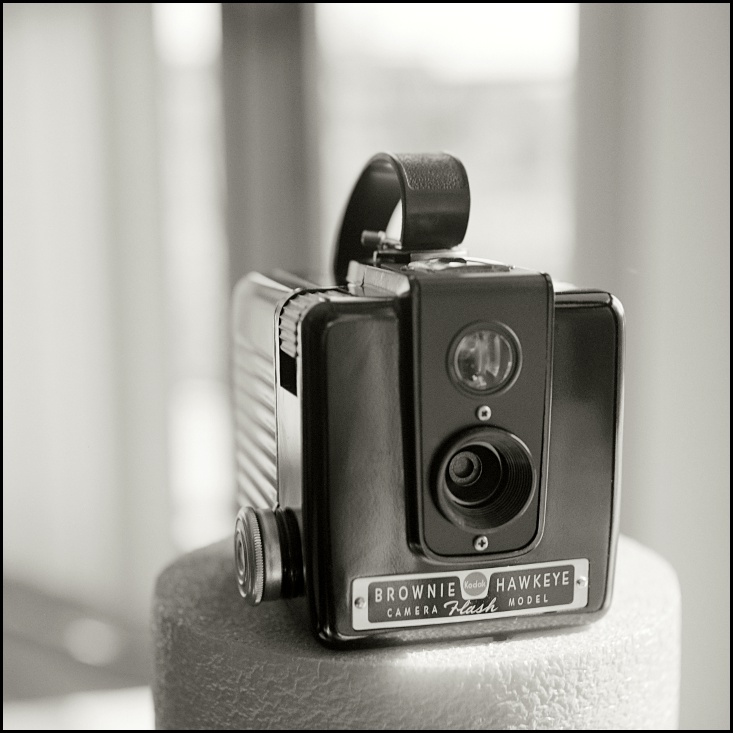the blackhawk...
Some of the recent photos on display previously were made with this humble plastic box. Known as the Kodak Brownie Hawkeye Flash, and dating from the early 1950s, this camera was once the ubiquitous democratic imaging device found by the millions in households all across post-war America. They were/are sturdy, practical, easy-to-use, and capable of making photographs of credible quality. The sample here is from an early production cycle, lacking an internal date code, equipped with a right-hand opening lever and a metal focus knob. I bought it last year for about ten bucks on ebay, cleaned it up good as new, then made a few modifications:
The first modification is merely cosmetic of course, giving "The Blackhawk" its distinguished and discreet appearance. The new look also serves to make the camera more suited to the type of sophisticated professional photography we practice here on incidence. When your clients are paying you $1000/hour for your services, you can't arrive carrying a toy! The other modifications were done to enhance image characteristics. As it is, these cameras come with a rather good single-element meniscus lens. But this real lens hides deep inside the camera and well behind the shutter, a less than ideal location from a marketing standpoint, when you want your camera to look up to snuff with all the other cameras out there on the shelves. So Kodak designers decided to add an extra piece of plain glass in front of the shutter, just to make it seem like the camera had a big lens up front. This faux lens otherwise serves no real purpose, and is there only to collect fingerprints, create flare, and otherwise degrade the image. On the Blackhawk it is now gone. In my own personal philosophy of photography, infinity usually makes for a poor subject. The "best" photographs are almost always of subjects within reach, two meters or less. Accordingly, I wanted to bias the lens in the Blackhawk to focus at a bit closer distance than stock. The original lens seems to favor an optimum focal plane of 10 to 15 feet, in order to capture infinity within a depth of field running from, say, eight feet to infinity. So I inserted a thin shim behind the lens to try to get the optimal focal plane down to about 5 feet, to hell with infinity. Now the Blackhawk can photograph subjects with sharp results at a closer distance, without having to resort to flipped lens or other gimmicks. Finally, I installed a smaller aperture. In its day, the fastest general purpose film used in the Brownie was about ISO 125. The Hawkeye was designed with a single shutter speed and aperture to give suitable results in outdoor open shade conditions with such film, roughly 1/50th of a second at f/11. With the general purpose ISO 400 speed films of today, the standard exposure of the Brownie will now turn out to be a stop or two over-exposed. The smaller aperture installed in this Blackhawk sits behind the shutter and in front of the lens, and is guestimated to be somewhere between f/16 and f/22. I guess I was also hoping that the smaller aperture might improve apparent sharpness a tad, as well as restore some of the depth of focus lost by the lens shim. In any case, I'm not yet ready to claim the aperture modification actually served any purpose whatsoever. Except that it seems to have introduced some extra vignetting at the top corners of the image. Oh well.... Anyway, the camera is great fun to use, and I am always surprised and pleased when I see the quality of results. Further info on the BHF by Mike Connealy here. Another extensive reference is here. Tirana, Albania, June 2011. Rolleiflex MX, Xenar, Rolleinar 2, Ilford HP5. |
